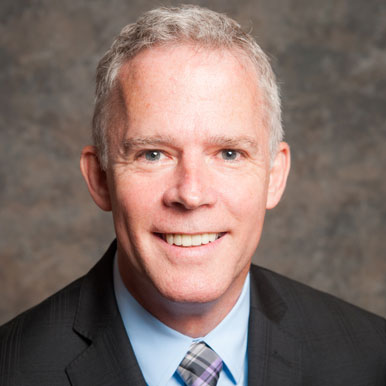Forges unique partnerships with private-sector organizations to galvanize their participation in the planning, response and relief efforts for communities struck by tornadoes, hurricanes and other disasters.
When tornadoes, hurricanes, floods and earthquakes strike communities throughout the United States, federal, state and local teams immediately rush to the scene to provide emergency aid and to assist in recovery and rebuilding efforts.
Often missing from the equation has been the full integration of the private sector into the government’s disaster planning and response—a limitation that Dan Stoneking of the Federal Emergency Management Agency (FEMA) has been systematically addressing.
As head of FEMA’s Private Sector Division, Stoneking has been instrumental in linking the government and the private sector—trade associations, corporations, academia and non-governmental organizations—as partners in emergency preparedness and disaster assistance.
Under Stoneking’s leadership, a national team of private sector liaisons have maintained communication with FEMA during disasters to determine the damage to private facilities, what resources are needed and what capabilities the private sector can contribute to the relief effort. They have provided FEMA and local emergency officials with situational awareness about utilities, communications, medical facilities, the availability of food and supplies, the condition of roads and transportation networks and other critical issues.
“Disasters don’t affect communities by sector,” said Darryl Madden, director of the FEMA’s Ready Campaign for disaster response and preparedness. “He’s been instrumental in employing the whole community approach and truly making the private sector a partner in every step of disaster management.”
As of 2012, Stoneking increased the network of private-sector relationships to hundreds of organizations as well as expanded the direct LISTSERV to more than 30,000 businesses and organizational subscribers, up from 22,000 in 2010.
The extended private sector connections have improved disaster response by enabling supply trucks to reach emergency-restricted zones and disaster-assistance messages to run on hotel room televisions to keep survivors informed.
After deadly tornadoes swept through the southeast last year, Stoneking’s team worked with the Outdoor Advertising Association of America to post disaster assistance information on 155 electronic billboards across six states for a month. FEMA’s private-sector representatives also worked to keep more than 200 companies and organizations informed with situation reports and status updates. The companies, in turn, provided essential information back to FEMA on store openings, closures, conditions and challenges.
When Hurricane Irene struck New Jersey in August 2011, causing major power outages, it was critical for the retail chains that lost power to know where it was going to be restored first, so they could restock stores in those locations. Pre-planning and established relationships allowed that information to be quickly relayed.
“The private sector is not an afterthought or an additional audience, but needs to be a full and active member of the team,” said Stoneking. “This approach is unique in government.”
Stoneking has been methodically laying the foundation to increase private-sector involvement and disaster preparation.
Last year, he organized a national exercise on responding to a catastrophic earthquake with more than 3,000 players. He also created several hazard-specific tabletop exercises that can be accessed for free. The information was downloaded more than 8,000 times in the first few weeks after it was posted online.
Also in 2011, Stoneking organized the first national conference on how to use public-private partnerships to build resilience in the face of disaster. More than 1,000 people joined, either in-person or virtually, and those attendees were divided evenly between the public and private sector.
Stoneking brought together government and technology giants such as Google, Microsoft, Facebook, Verizon and others to discuss how to leverage technology to improve the way FEMA does business.
Under Stoneking’s leadership, FEMA also has brought company executives to work as full partners alongside agency employees during three-month rotations at the agency’s National Response Coordination Center.
These private-sector representatives, funded by their companies during their FEMA stint, work side-by-side with FEMA during normal operations and during disasters, and contribute to national-level projects related to planning, training, exercises, preparedness and mitigation activities.
Brad Brekke, vice president of corporate security and assets protection at Target Corporation, said Stoneking recognized that the private sector was “notably absent” from disaster response activities and decided to do something about it. “He identified that and worked to change it. He was able to show us it was possible to engage and moved the needle,” said Brekke.
Jessica Smith, FEMA’s director of external affairs, said the private sector wants to help and participate, and Stoneking has tapped into that desire and expanded their participation
“Dan is the private sector’s strongest advocate within FEMA,” said Smith. “He works to find new and better ways to plug the private sector in wherever their capabilities, needs and interests best align with the mission.”

